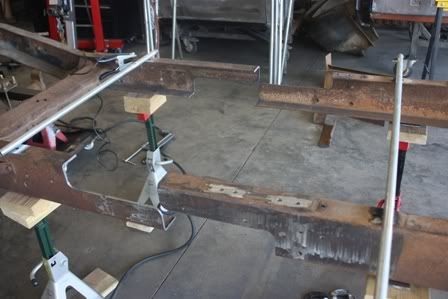Fordnatic wrote:That's pretty harsh.
How harsh would it be when workmanship like this causes a vehicle to break in half under a heavy load or hard braking on the freeway and kill you or a family member of yours? I've seen many late model factory truck frames crack, frames that were computer designed and built with modern materials in a highly controlled environment. You want to bet your life on Billy Bob's backyard frame splice holding up?
From the pictures of this frame splice job it looks pretty obvious that the weld prep and fit up is terrible, the fit up is 90% of the job. poor fit= poor weld quality = low strength. Beyond the fit up, the weld looks bad. You don't weld and bolt a frame splice like that, the bolts just induce stress into the frame close to the weld. When you weld any material, especially a structural member under stress you follow one rule pretty closely- The strongest welds are made between materials of the same thickness and makeup. Odds are not favorable that treadplate bolted on there is the same alloy as the frame.
When you cut a longbed frame down to a shortbed frame you're usually stuck making a straight vertical splice to clear the rear cab mounts/front bed mounts. When you do a frame splice like this you shouldn't be thinking about the backer, you should be focussed on making a weld joint that maintains the frame integrity 100% by itself, the backer is just there to make a full pen weld easier and as a bonus gaurantees the frame splice is stronger than the original frame when done right. The backer needs to put minimal stress into the frame, that's why they call it "fishplating" because a fish shaped backer introduces the least stress into the base materials. The start and stopping points of weld beads are where stress fractures begin. Bead starts are cold and bead ends can be craters. The welding itself needs to be done right, the rod/wire isn't that important, even 60 series materials are plenty strong for a frame. Late model frames, import frames are often not mild steel. These need proper care, preheating and proper 70 series rod/wire, slow cool in addition to standard post-weld peening. Knowing how to make good strong welds without undercutting the base material is key. You need nice welds for a strong joint. Post weld peening isn't required, but it sure doesn't hurt. I use a needle scaler while each weld is still hot.
1970 F-250 4x4 original Willock swivel frame chassis '93 5.9 Cummins/Getrag/NP205/HP60/D70




